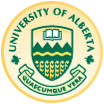 |
|
||||
- MELANIA ALVAREZ & DAVID LEEMING, University of Victoria
Math Outreach Initiatives and activities sponsored by PIMS [PDF]
-
We present a wide range of math educational outreach activities involving elementary, middle and secondary level students as well as at the post-secondary level. Also, we will describe our outreach programs into the First Nations schools in British Columbia.
- WARREN CODE, University of British Columbia
"Clicker" use in first year calculus [PDF]
-
I will report on recent use of whole class voting (using "clickers") in first year calculus courses by instructors of
varying experience levels in our department. I will describe some of the resources used, benefits to learning (those
perceived, expected and/or surprising), and common concerns associated with this instructional mode.
- MALGORZATA DUBIEL, Simon Fraser University
Inspiring Mathematical Creativity in Future Elementary Teachers [PDF]
-
The majority of students in a Mathematics for Elementary Teachers course believe that they are not good at mathematics. While they understand the need for creativity in elementary classroom, they don’t consider mathematics as an area where such creativity is possible. We need to change their attitudes, so they can be an inspiration to their students.
I will discuss examples of efforts to inspire creativity in the SFU Math 190, Mathematics for Elementary Teachers course, and in our FAN X99, Foundations of Quantitative and Analytical Reasoning course.
- FRED HARWOOD, Hugh McRoberts Secondary
Crafting Connections Through Creative Chunking [PDF]
-
We desire that students make connections within mathematics, across curricular areas and into life applications. We can't assume that transfer happens the way we expect it to. We can bring students into contact with pattern inducing connections by creative chunking of material. Reflective questionning and open ended inquiries allow students to exercise creativity and to seek further connections. This presentation will uncover some of these successful efforts in my classes and speak to how this discovery based approach creates a spirit of creativity in my classes. Mathematics is dynamic. Math classes should mirror this reality.
- JENNIFER HYNDMAN, University of Northern British Columbia
Creative Discomfort in Mathematics Projects [PDF]
-
In my fourth year classes I assign a project where the students must do something creative that is related to the mathematics of the course. The caveat is that it must be outside of their comfort zone --- they cannot already be experts. The response has ranged from plays to haiku to game creation to artwork. I will display some of the projects that students have submitted. This has been very effective in encouraging involvement in fourth year classes of under 20 students. I am interested in using this in large first year classes and will ask the audience for advice on how to implement this.
- DJUN KIM & JOANNE NAKONECHY, University of British Columbia
Cognitive Load Theory for Constructing Questions [PDF]
-
Cognitive load theory (Paas 1993) provides an approach for writing appropriate level questions so that novices will be more likely to answer the intended question. Cognitive load theory focuses on excluding extraneous information and providing only essential information for the learner. Although this approach is generally used to select the fundamental component parts of a topic and then ordering them to scaffold learning the new material, we have also found that better test questions can be constructed using these same principles. Come and experience the difference and learn the principles for writing questions using cognitive load principles.
- JESSE MASON & ERIC NASLUND, University of Northern British Columbia
Student Panel on Creativity [PDF]
-
The session organizers posed the questions below to some students. The panelists give their responses to the questions.
What were the most creative things an instructor asked you to do in a class?
How did you and the other students react to these requests? Did you enjoy doing them? What did you learn from them? Has your opinion of the activities changed between when you did them and now?
Is there something that you were never asked to do that you would have enjoyed doing?
- SANDI MERCHANT, University of British Columbia
Assessing and Improving Learning in an Introductory Proof Course [PDF]
-
A required course for most mathematics majors at UBC is “MATH 220 – Mathematical Proof.” This course is intended to provide students with fundamental proof skills, including knowledge of the different types of proof and the ability to compose these so that they are clear, concise, correct and complete. However, performance in this and in subsequent courses suggests that the learning achieved is less than desired and that transfer of key skills to other contexts is not achieved. I will present our attempts to study and improve learning in this course and seek input from the audience about innovative methods that may be used in the future.
- COSTANZA PICCOLO, University of British Columbia
The Calculus Workshop Program: An Alternative to Traditional Lectures in a Large Multi-section Course [PDF]
-
The first-year Calculus Workshop Program offered at UBC provides an activity where students meet once a week outside
of lecture time to work on math problems in small groups. This may sound simple enough, but in fact the design and
delivery of the program in a large multi-section course is a complex process. I will describe the difficulties we
encountered in replacing an hour of lecture per week with a workshop, as well as discuss what changes were
implemented that resulted in measurable improvements.
- ROUND TABLE ON CREATIVITY
- NATHALIE SINCLAIR, Simon Fraser University
Using dynamic mathematical imagery to promote creativity [PDF]
- NATHALIE SINCLAIR, Simon Fraser University
-
This talk will focus on the use of dynamic geometry software to offer students visual and kinetic representations of mathematical concepts. I will argue that these representations help provide students with the kind of "intuitive" understandings that so many mathematicians use to engage in creative work. The examples will draw on a range of topics including linear algebra, topology and functions.








